Mental Health Awareness Month, observed annually in May, serves as a vital period to educate the public about mental illnesses, reduce associated stigmas, and promote strategies for mental wellness. Established in 1949 by Mental Health America, this observance has evolved to address various aspects of mental health, including the importance of early intervention and the impact of societal factors on mental well-being. Throughout history, the contributions and experiences of individuals with mental health challenges—particularly those from marginalized communities—have often been devalued or ignored. By highlighting diverse voices, we can work to dismantle these stigmas and foster greater empathy, understanding, and support for mental health issues. One powerful way to do this is through literature.
Sharing children’s literature that addresses mental health topics can help any age learner better understand this often taboo subject. We have selected a variety of texts that foster awareness, empathy, and open dialogue.
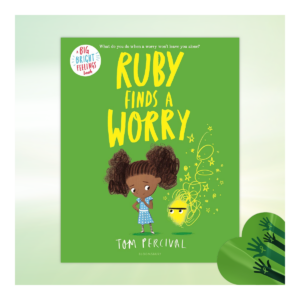 Ruby Finds a Worry by Tom Percival
Ruby Finds a Worry by Tom Percival
Find it on Amazon
This beautifully illustrated picture book follows Ruby, a young girl who finds herself carrying around a growing worry. As the worry gets bigger, Ruby learns that sharing her feelings with someone she trusts can help it shrink. Tom Percival, an advocate for children’s emotional well-being, creates an engaging and accessible introduction to anxiety for young readers.
Ruby’s experiences provide a simple yet effective way for children to understand anxiety and how to manage it. It helps them recognize that worries are normal but do not have to take over their lives. Teachers can use this book to encourage discussions about stress and anxiety, teach mindfulness strategies, and create a safe space for students to share their feelings.
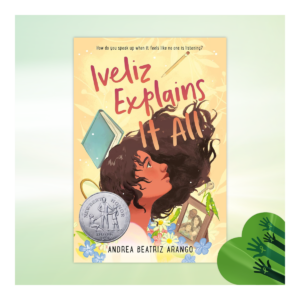 Iveliz Explains It All by Andrea Beatriz Arango
Iveliz Explains It All by Andrea Beatriz Arango
Find it on Amazon
This novel-in-verse follows 12-year-old Iveliz as she navigates the challenges of starting junior high while managing her mental health. Through her diary entries, readers gain insight into her struggles with depression, anxiety, and the complexities of family dynamics. Andrea Beatriz Arango, a Latina author and educator, brings authenticity to Iveliz’s journey by incorporating cultural nuances and personal experiences, making her an expert on the subject.
Arango’s story provides an honest portrayal of a young girl dealing with mental illness, emphasizing the importance of open conversations, therapy, and support systems. It helps young readers understand that they are not alone and that mental health challenges should be approached with empathy. Educators can use this book to initiate discussions about mental health, cultural identity, and seeking help. Students can engage in projects that explore the stigma surrounding mental illness, research mental health resources, and develop strategies to support peers facing similar challenges.
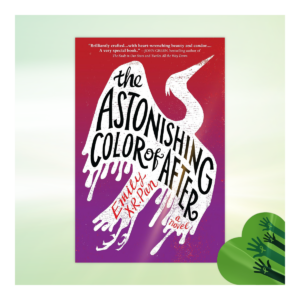 The Astonishing Color of After by Emily X.R. Pan
The Astonishing Color of After by Emily X.R. Pan
Find it on Amazon
The protagonist of The Astonishing Color of After, Leigh, travels to Taiwan to meet her maternal grandparents after her mother’s suicide. Believing her mother has transformed into a red bird, Leigh embarks on a journey of grief, self-discovery, and connection to her heritage. Emily X.R. Pan draws from her own Taiwanese-American background to compose a deeply emotional narrative that portrays grief and mental illness with sensitivity and understanding.
The narrative delves into the complexities of coping with loss and the impact of cultural identity on mental health. It highlights the ways different cultures approach grief, the challenges of navigating multiple identities, and the importance of familial connections. In the classroom, this book can serve as a gateway to discussions on grief, cultural diversity, and the ways art can be used as a coping mechanism. Students might explore projects that compare cultural practices surrounding mental health and mourning or create personal reflections through visual storytelling.
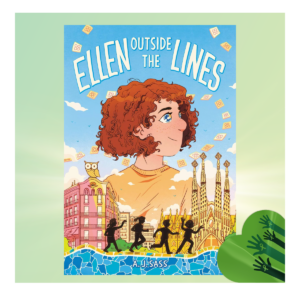 Ellen Outside the Lines by A.J. Sass
Ellen Outside the Lines by A.J. Sass
Find it on Amazon
Ellen, a Jewish and autistic girl, embarks on a class trip to Barcelona, Spain, where she navigates changes in friendships, identity, and the challenges of new environments. A.J. Sass, an autistic author, brings authenticity to Ellen’s character, offering readers an insightful perspective on neurodiversity and the everyday experiences of autistic individuals.
Reflecting on and discussing Ellen Outside the Lines supports learners’ understanding of autism and the importance of embracing different ways of thinking and experiencing the world. It also touches on themes of self-acceptance and navigating social interactions. Educators can use this book to discuss neurodiversity, inclusivity, and the value of diverse perspectives. Classroom projects could involve exploring different cultural norms and how they relate to inclusivity and acceptance, as well as personal reflection essays on what it means to be part of a diverse community.
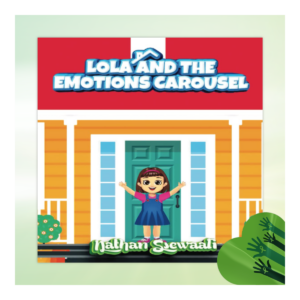 Lola and the Emotions Carousel by Nathan Ssewaali
Lola and the Emotions Carousel by Nathan Ssewaali
Find it on Amazon
This story follows Lola as she learns to identify and manage her emotions, using the metaphor of a carousel to represent the ups and downs of feelings. Nathan Ssewaali, a Ugandan author based in Canada, combines his cultural heritage with his passion for children’s mental health advocacy to create a relatable and educational narrative.
Lola and the Emotions Carousel serves as a tool for young readers to understand and articulate their emotions, promoting emotional intelligence and mental well-being. It encourages conversations about emotional regulation and mental resilience. Teachers can use this book to introduce concepts of emotional regulation and mental health awareness. Activities might include creating emotion wheels, journaling exercises, or role-playing scenarios to help students express and manage their feelings.
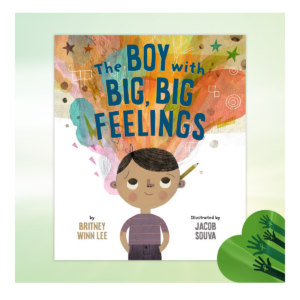 The Boy with Big, Big Feelings by Britney Winn Lee
The Boy with Big, Big Feelings by Britney Winn Lee
Find it on Amazon
This heartwarming book follows a young boy who experiences emotions intensely, whether joy, sadness, worry, or anything that may come up. He learns that his feelings are valid and that he is not alone in having big emotions. This book’s author, Britney Winn Lee, shares a touching story that reassures children who struggle with strong feelings.
The book helps children understand emotional expression and that having big emotions is completely normal. It supports emotional intelligence and self-acceptance. Educators can use this book to discuss emotional regulation, encourage storytelling about personal experiences, and engage students in activities that explore different ways to manage big feelings in a healthy way.
What’s Next?
You can foster meaningful discussions on mental health, cultural identity, and inclusivity with the help of these diverse and insightful children’s books. Each story provides students with some of the tools needed to understand, empathize with, and support themselves and others experiencing mental health challenges.
Together, we can create learning environments that promote awareness, empathy, and resilience.
You can continue to support the mental health of all people by bringing Youth Empowered Stewardship to your school. Youth Empowered Stewardship (YES) is an innovative and experiential learning process. YES activates and sustains authentic partnerships between adults and students leading to compelling, sustainable, vibrant communities. Facilitators foster multi-generational collaboration through music, movement, and visual arts to address complex educational challenges. Drive continuous improvement with this asset-based, solution-oriented process.



